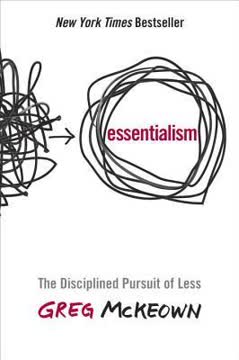Key Takeaways
1. Conflict responses are subconscious, scripted, and for group benefit
Your reactions to conflict are subconscious, scripted, and for the good of the group.
Automatic responses. Our reactions to conflict often occur faster than conscious thought, following predictable patterns or "scripts." These scripts are deeply ingrained and serve evolutionary purposes, primarily aimed at maintaining group cohesion and stability.
Group over individual. While these automatic responses may not always benefit the individual, they generally work to preserve the group's integrity. This can lead to seemingly irrational behaviors, such as staying in dysfunctional relationships or repeating unproductive arguments.
Awareness is key. Recognizing these subconscious patterns is the first step in gaining control over our conflict responses. By understanding that our reactions are often not personal choices but programmed responses, we can begin to consciously choose more effective ways of handling conflicts.
2. Three brain levels: Lizard, Monkey, and Human
The Lizard is only concerned with survival and outranks the Monkey, so how can there be soldiers?
Lizard brain: survival. The oldest part of our brain, focused solely on immediate survival needs. It reacts instinctively to perceived threats and can override higher-level thinking in life-or-death situations.
Monkey brain: social. This part handles social interactions, status, and group dynamics. It's the source of many emotional responses and can't distinguish between social humiliation and physical danger.
Human brain: rational. The newest part, capable of abstract thought and problem-solving. It's often overridden by the other two in conflict situations.
- Understanding these levels helps in:
- Recognizing which "brain" is in control during conflicts
- Consciously engaging the Human brain for better outcomes
- Anticipating others' reactions based on which level they're operating from
3. Maslow's Hierarchy influences conflict dynamics
You cannot simultaneously ignore problems and solve them.
Needs drive behavior. Maslow's Hierarchy of Needs provides a framework for understanding motivations behind conflicts. People operating from different levels of the hierarchy may have vastly different priorities and perceptions.
Safety before self-actualization. Lower-level needs (physiological, safety) must be met before higher-level concerns (belongingness, esteem, self-actualization) can be addressed effectively. This explains why some conflicts seem trivial to outsiders but are crucial to those involved.
Conflict origins matter. Recognizing which level of the hierarchy a conflict stems from can guide appropriate responses:
- Survival-level conflicts require immediate, practical solutions
- Social-level conflicts often benefit from emotional validation and status considerations
- Self-actualization conflicts may involve deeper values and beliefs
4. Recognize and abort unhelpful conflict scripts
If you get hooked, you will find yourself on a script. If you get angry, if you start labeling, if you want to show who is best… you know the signs. You must recognize it and then spit out the hook.
Script awareness. Learn to recognize when you're falling into predictable conflict patterns. Common signs include:
- Emotional reactions overtaking rational thought
- Focusing on winning rather than problem-solving
- Using labels or stereotypes to dismiss others
Breaking the cycle. Once you recognize a script, take conscious action to change course:
- Take a deep breath and acknowledge your emotional state
- Refocus on the actual problem rather than personal feelings
- Use "we" language to promote cooperation instead of opposition
Choose your response. Remember that you have options beyond following the script:
- Continue the script if it's actually helpful
- Switch to a different, more productive script
- Abort the script entirely and address the core issue directly
5. Set clear boundaries and work from common ground
"No" is a complete sentence.
Clear boundaries. Setting and enforcing clear boundaries is crucial in managing conflicts. This involves:
- Being explicit about what is and isn't acceptable
- Using simple, direct language
- Being prepared to enforce stated boundaries
Common ground focus. Instead of dwelling on differences, actively seek areas of agreement or shared experiences. This approach:
- Builds rapport and trust
- Makes communication easier
- Creates a foundation for problem-solving
Cultural considerations. Be aware that boundary-setting and common ground may look different across cultures. Adapt your approach accordingly, and when in doubt, ask for clarification on local norms and expectations.
6. Reputation and adrenaline management in conflicts
Resources + Helping Others = Respect
Build positive reputation. Your reputation is based on consistent actions over time, not self-proclamations. Cultivate a reputation for:
- Reliability
- Fairness
- Willingness to help others
Adrenaline awareness. Recognize how adrenaline affects you and others in conflicts:
- Men often experience quick spikes and drops
- Women tend to have slower builds and longer-lasting effects
- Use this knowledge to time difficult conversations and interventions
Resource management. Understand that respect comes from having resources (skills, knowledge, compassion) and using them to benefit others. This "alpha" status is earned through consistent, helpful actions rather than domineering behavior.
7. Violence exists on a spectrum of coercion levels
The level above yours is bad, the level below yours is weak.
Coercion spectrum. Violence and coercion exist on a continuum, from subtle social pressure to lethal force. The levels, in order:
- Nice
- Manipulative
- Assertive
- Aggressive
- Assaultive
- Lethal
Comfort zones. People tend to be comfortable operating within their usual level and view those above as "bad" while seeing lower levels as "weak." This perception gap can lead to misunderstandings and escalation.
Level-appropriate responses. Recognize which level of coercion you're dealing with and respond accordingly:
- Lower levels often require social skills and emotional intelligence
- Higher levels may demand physical intervention or de-escalation techniques
- Moving up levels (increasing force) is challenging; moving down is easier
8. Active listening and tactical apologies defuse conflicts
Everything in this manual is blatantly manipulative, but here's the deal--all communication is manipulation.
Active listening power. Practice active listening to gather information and build rapport:
- Focus intently on the speaker
- Paraphrase to ensure understanding
- Ask clarifying questions
- Acknowledge emotions without judgment
Tactical apologies. Use apologies strategically to defuse tensions:
- "I'm sorry you're upset" acknowledges feelings without admitting fault
- Follow with "What should we do now?" to refocus on problem-solving
- Remember that apologizing often makes you appear mature and reasonable, not weak
Manipulation awareness. Recognize that all communication involves some level of influence or manipulation. The key is using these tools ethically to achieve positive outcomes for all parties involved.
9. Predators and survival-level threats require different approaches
When you deal with social violence as if it were asocial, you unnecessarily hurt people. When you deal with asocial violence as if it were social, you get hurt.
Distinguish threat types. Recognize the difference between social conflicts (status, belonging) and asocial threats (predatory, survival):
- Social conflicts follow predictable scripts and rules
- Asocial threats don't adhere to social norms or expectations
Social conflict approach:
- Use de-escalation techniques
- Appeal to shared values or group norms
- Seek win-win solutions
Asocial threat response:
- Prioritize personal safety
- Set and enforce hard boundaries
- Be prepared to use appropriate force if necessary
Adaptability is key. Train yourself to quickly assess the nature of a threat and adapt your response accordingly. Misidentifying the type of conflict can lead to ineffective or dangerous reactions.
Last updated:
FAQ
What's "Conflict Communication: A New Paradigm in Conscious Communication" about?
- Overview: "Conflict Communication" by Rory Miller explores a new approach to understanding and managing conflict through conscious communication. It emphasizes recognizing subconscious patterns and scripts in human interactions.
- Purpose: The book aims to equip readers with tools to identify and alter these patterns, improving personal and professional relationships.
- Structure: It is divided into sections covering background concepts, fundamental principles, and practical tactics for managing conflict effectively.
Why should I read "Conflict Communication"?
- Practical Tools: The book provides actionable strategies for resolving conflicts, which can be applied in various settings, from personal relationships to professional environments.
- Insightful Framework: It offers a unique perspective on human behavior, helping readers understand the subconscious scripts that drive conflict.
- Improved Interactions: By applying the concepts, readers can enhance their communication skills, leading to more productive and harmonious interactions.
What are the key takeaways of "Conflict Communication"?
- Subconscious Scripts: Human responses to conflict are often subconscious and follow predictable patterns, which can be identified and altered.
- Three Brains Model: The book introduces the concept of the Lizard, Monkey, and Human brains, each playing a role in conflict dynamics.
- Practical Techniques: It provides specific tools and techniques, such as active listening and tactical apologies, to manage and resolve conflicts effectively.
How does Rory Miller define the "Three Brains" in conflict communication?
- Lizard Brain: This is the oldest part of the brain, focused on survival instincts and physical responses. It is triggered by fear and operates on a primal level.
- Monkey Brain: Corresponding to the limbic system, it is concerned with social behavior, status, and emotions. It often drives conflict through subconscious scripts.
- Human Brain: The neocortex, responsible for rational thought and problem-solving. It is slower but capable of overriding the other two brains with conscious effort.
What is the significance of "scripts" in conflict communication according to Rory Miller?
- Predictable Patterns: Scripts are subconscious patterns of behavior that people follow during conflicts, often without realizing it.
- Stability Over Happiness: These scripts prioritize group stability over individual happiness, leading to repetitive and unresolved conflicts.
- Recognizing and Altering: By recognizing these scripts, individuals can choose to alter them, leading to more effective conflict resolution.
How can "active listening" improve conflict communication?
- Intelligence Gathering: Active listening involves receiving information accurately and encouraging the other person to keep talking, which helps gather valuable insights.
- Emotional Acknowledgment: It requires acknowledging both your own and the other person's emotional states, which can de-escalate tension.
- Clarification and Engagement: By paraphrasing and asking clarifying questions, active listening ensures understanding and keeps the conversation focused on resolving the issue.
What is the "Tactical Apology" and how is it used in conflict communication?
- Empathy Without Responsibility: A tactical apology involves saying, "I'm sorry you're upset," which shows empathy without assuming responsibility for the issue.
- Script Completion: It helps complete the conflict script, allowing both parties to move forward and address the real problem.
- Leadership and Maturity: Offering a tactical apology can demonstrate leadership and maturity, often diffusing tension and facilitating resolution.
How does Rory Miller suggest handling "Monkey Problems" in conflict situations?
- Identify the Problem: Recognize when conflicts arise from status, territory, or protocol issues, which are common Monkey Problems.
- Address the Monkey Brain: Use strategies like raising the other person's status or acknowledging their role to appease the Monkey brain.
- Focus on the Human Problem: Shift the focus from the Monkey issues to the actual problem that needs solving, using rational and respectful communication.
What are the "Levels of Coercion" in violence as described by Rory Miller?
- Nice to Lethal: The levels range from nice (subtle social coercion) to lethal (extreme physical violence), each with increasing intensity.
- Comfort with Violence: People are comfortable at their level and often see the level above as wrong or violent.
- Understanding Levels: Recognizing these levels helps in assessing threats and understanding the dynamics of conflict and violence.
How can understanding "Social vs. Asocial Violence" aid in conflict communication?
- Social Violence: This involves communication and is often about status and group dynamics, with an audience present.
- Asocial Violence: Predatory and without witnesses, it involves a calculated risk/reward assessment by the aggressor.
- Appropriate Response: Understanding the type of violence helps in choosing the right response, whether it's de-escalation or self-defense.
What are some of the best quotes from "Conflict Communication" and what do they mean?
- "Your responses to conflict are subconscious, scripted, and for the good of the group." This highlights the automatic nature of conflict responses and the importance of recognizing and altering them for better outcomes.
- "You are physically incapable of making a good decision if you care." Emphasizes the impact of emotions on decision-making, advocating for a rational approach to conflict.
- "The Lizard, the Monkey, and the Human." Refers to the three-brain model, illustrating the different aspects of human behavior in conflict situations.
How can "Conflict Communication" by Rory Miller change my approach to conflict?
- Increased Awareness: By understanding the subconscious scripts and brain dynamics, you become more aware of your own and others' behavior in conflicts.
- Improved Skills: The book provides practical tools and techniques to manage and resolve conflicts more effectively.
- Empowerment: With these insights and skills, you can take control of conflict situations, leading to more positive and productive interactions.
Review Summary
ConCom by Rory Miller receives high praise for its insightful approach to conflict communication. Readers appreciate Miller's experience-based advice on de-escalating potentially violent situations and navigating social dynamics. The book's breakdown of human behavior into "lizard," "monkey," and "human" brain responses resonates with many. While some find the writing style occasionally disjointed, most consider it a valuable resource for understanding and managing conflicts in various settings, from personal relationships to professional environments.
Similar Books










Download PDF
Download EPUB
.epub digital book format is ideal for reading ebooks on phones, tablets, and e-readers.







